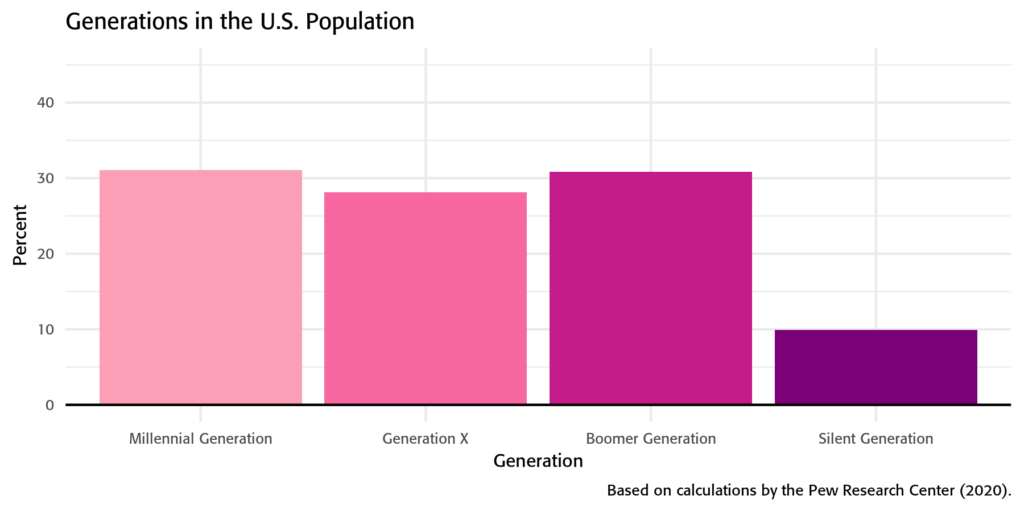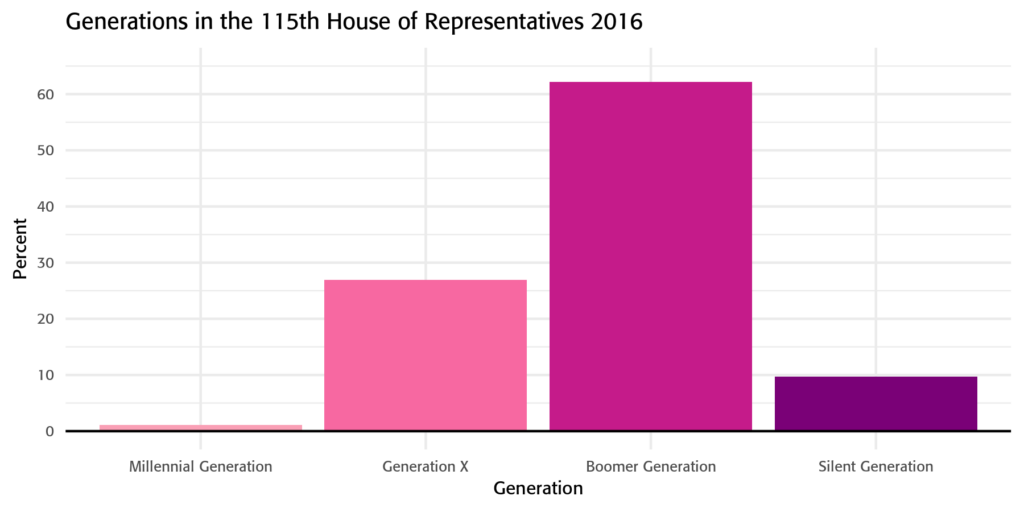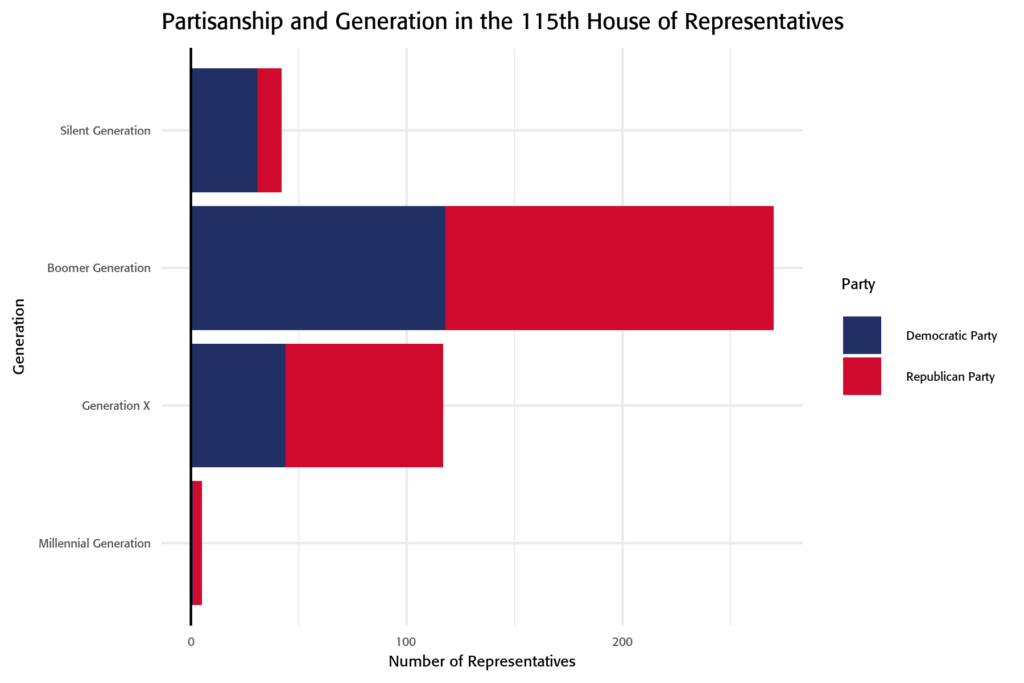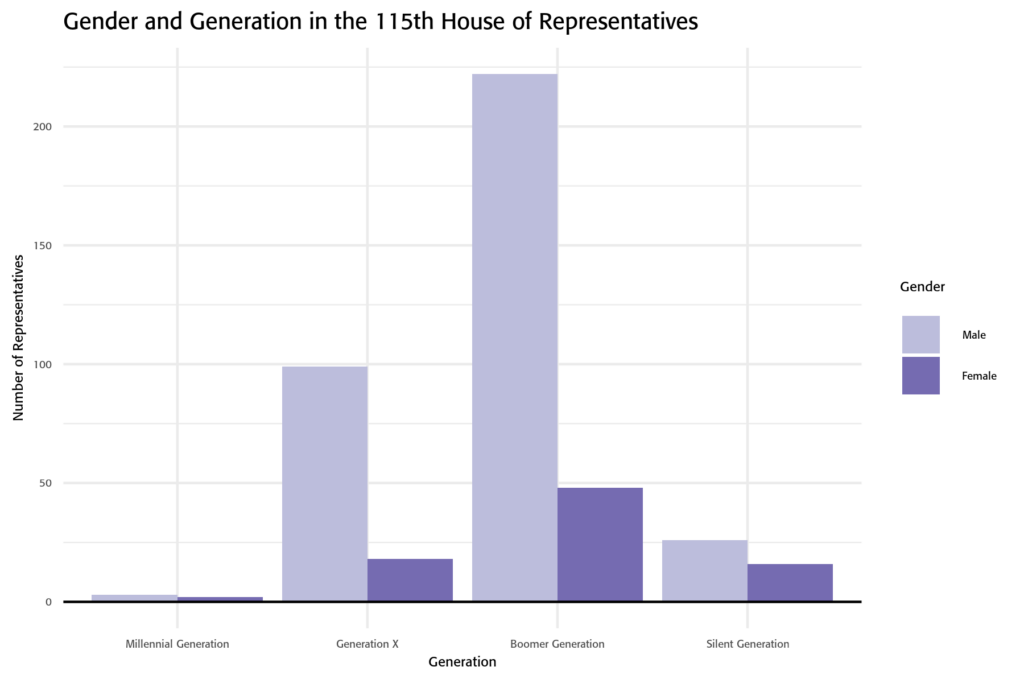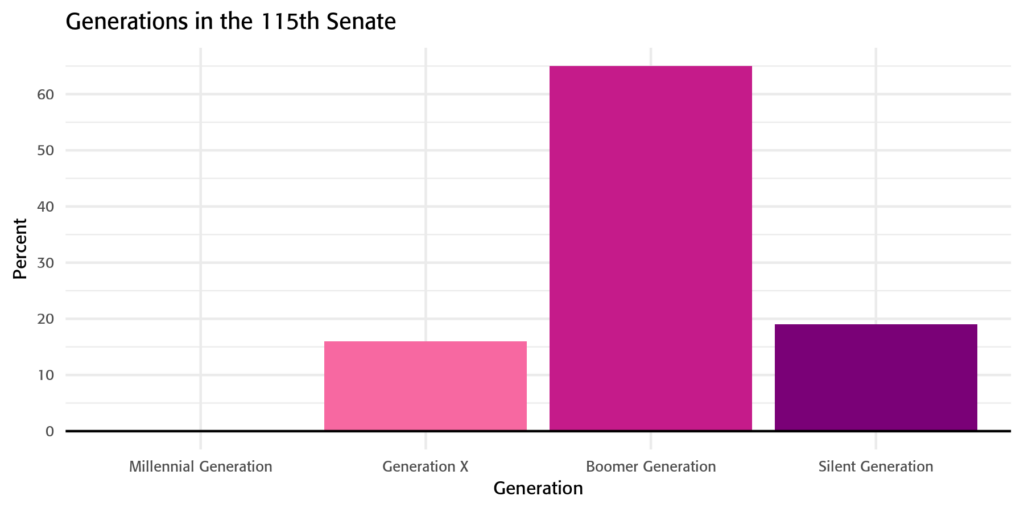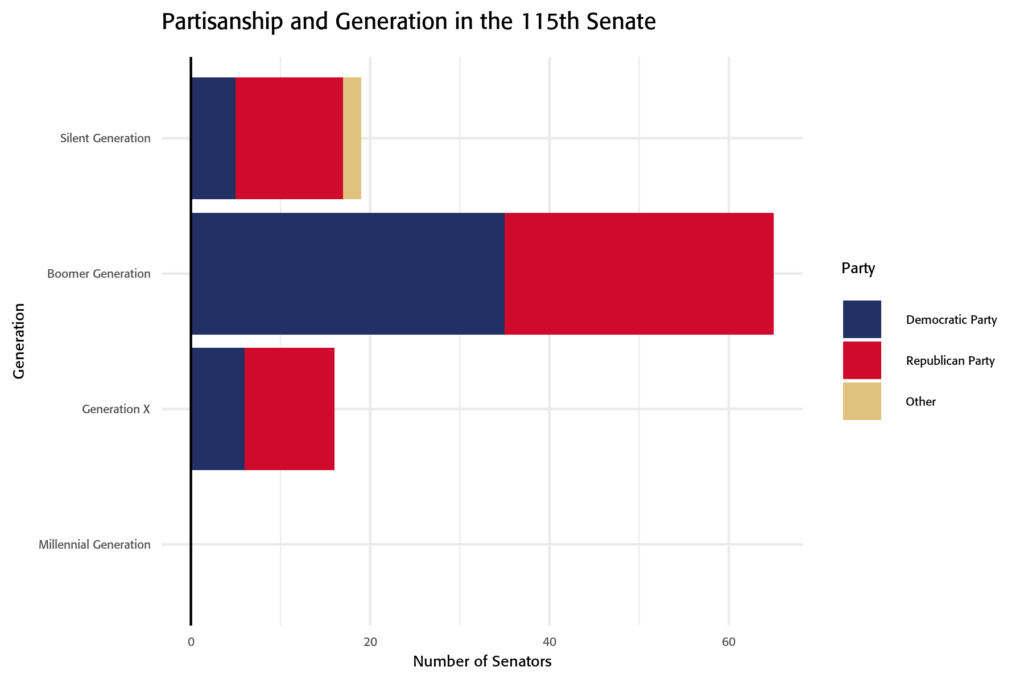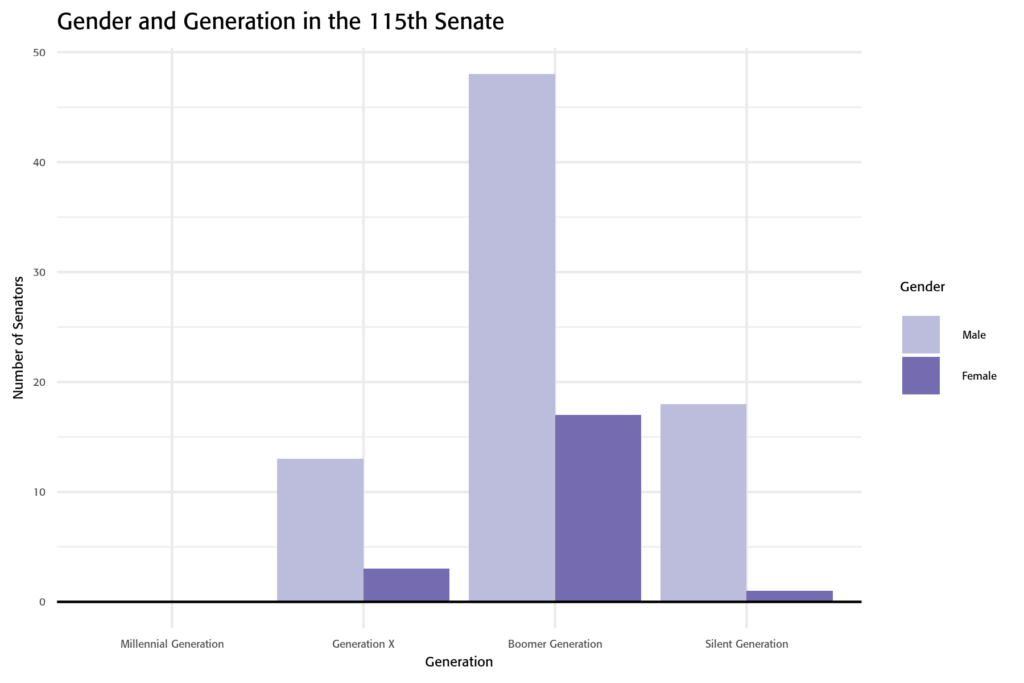The 115th United States Congress
The 115th Congress was elected on November 6, 2016. The new legislative period began on January 3, 2017 and ended in January 2019. There are 435 members in the U.S. House of Representatives and 100 members in the Senate. The minimum age to be eligible as member of the House is 25. Senators must be at least 30 years old.
Demographic Background
According to the Pew Research Center, based on data from the U.S. Census, Millennials have become the largest generation in the United States, with about 31%. The second largest generation are the Baby Boomers (30.88%). About 28% of the U.S. population belong to Generation X. The smallest generation is the Silent Generation (9.91%).
The 115th House of Representatives
- The average age of the US House of Representatives was 57 years old
- The youngest member was 33 years old (Elise Stefanik)
- The oldest member was 84 years old (Louise Slaughter)
- 5 individuals were from the Millennial Generation
- 4 individuals were Young Elected Leaders (age 35 or younger):
- Elise Stefanik (33), NY
- Michael Gallagher (33), WI
- Joseph Hollingsworth III (34), IN
- Matthew Gaetz (35), FL
The Baby Boom Generation held a majority in the U.S. House of Representatives, which was disproportional given the fact that the Millennial Generation was larger — in fact, the Millennial Generation was a minority in the U.S. House compared to the other three generations.
Partisanship in the 115th House of Representatives
In the 115th Congress, the Republican Party held a majority in the U.S. House of Representatives. This contrasted with the U.S. population where a majority of individuals identified as Democrats. Although a large number of citizens identified as Independent, there were no Independent representatives in the U.S. House. As such, the partisanship breakdown of the US House did not align with the partisanship breakdown of the U.S. population as a whole.
Additionally, the partisanship of YELs leaned in favor of the Republican party, while the party identification of young people showed that a majority are Democrat while the remaining are a mixture of both Republican and Independent. One Young Elected Leader was a Democrat, 3 were Republicans.
Gender in the 115th House of Representatives
Historically, the U.S. House of Representatives has been dominated by men. This was a continued trend in the 115th — in contrast to a population that is an almost even split between men and women. As such, there was disjoint between the gender breakdown of the U.S. House and the gender breakdown of the U.S. population as a whole.
Similarly, 3 of 4 YELs were male, which was not representative of the gender breakdown of young people, in which the population of men and women is roughly half and half.
Race and Ethnicity in the 115th House of Representatives
| Race/Ethnicity | Millennial Generation | Generation X | Boomer Generation | Silent Generation |
| Asian | 0 | 2 | 1 | 0 |
| Black/African American | 0 | 7 | 27 | 11 |
| American Indian/Alaska Native | 0 | 0 | 0 | 0 |
| Hispanic/Latinx | 0 | 16 | 14 | 3 |
| Native Hawaiian/Other Pacific Islander | 0 | 0 | 0 | 0 |
| Other | 1 | 6 | 3 | 0 |
| Two or More Ethnicities | 0 | 0 | 0 | 0 |
| White | 4 | 85 | 224 | 27 |
While a majority of people both within the U.S. population and the U.S. House of Representatives were white, the other racial and ethnic groups were disproportionately represented. As such, the ethnic breakdown of the U.S. House did not mirror the ethnic breakdown of the U.S. population as a whole.
In comparison, a majority of Millennials in the US House were white, with a small percentage of a minority ethnicity. This was not representative of the ethnic breakdown of the Millennial Generation.
The 115th U.S. Senate
- The average age of Senators was 60 years
- The youngest member was 40 years old (Tom Cotton, R-AK)
- The oldest member was 84 years old (Dianne Feinstein, D-CA)
- There were no Young Elected Leaders (age 35 or younger) in the Senate
The Baby Boom Generation generation held a disproportionate majority in the Senate and accounted for more than three-fifths of the entire chamber. Millennials, despite being the largest generation in terms of population, were the least represented with no current members of the Senate.
Partisanship of the 115th U.S. Senate
As the Republican Party held the majority of seats in the Senate, the partisanship of the chamber was not representative of the population as a whole, which leaned Democratic. Those who identified as Independent were especially underrepresented in the Senate, as Independents only held two seats. The partisanship of the population as a whole was not reflected in the membership of the Senate.
Gender in the 115th U.S. Senate
The Senate did not represent the nearly 50/50 population split between men and women in the United States. The gender balance in the Senate was heavily skewed with men holding a strong majority of the 100 seats. Women only accounted for 21% of the seats in the U.S. Senate.
Race/Ethnicity in the 115th U.S. Senate
| Race/Ethnicity | Millennial Generation | Generation X | Baby Boomers | Silent Generation |
| Black/African American | 0 | 2 | 0 | 0 |
| White | 0 | 11 | 61 | 19 |
| Hispanic/Latinx | 0 | 2 | 2 | 0 |
| Asian | 0 | 1 | 2 | 0 |
The ethnic breakdown of the U.S. Senate did not reflect the ethnic diversity of the population as a whole. White people were overrepresented, whereas other racial groups were underrepresented or not represented at all.


